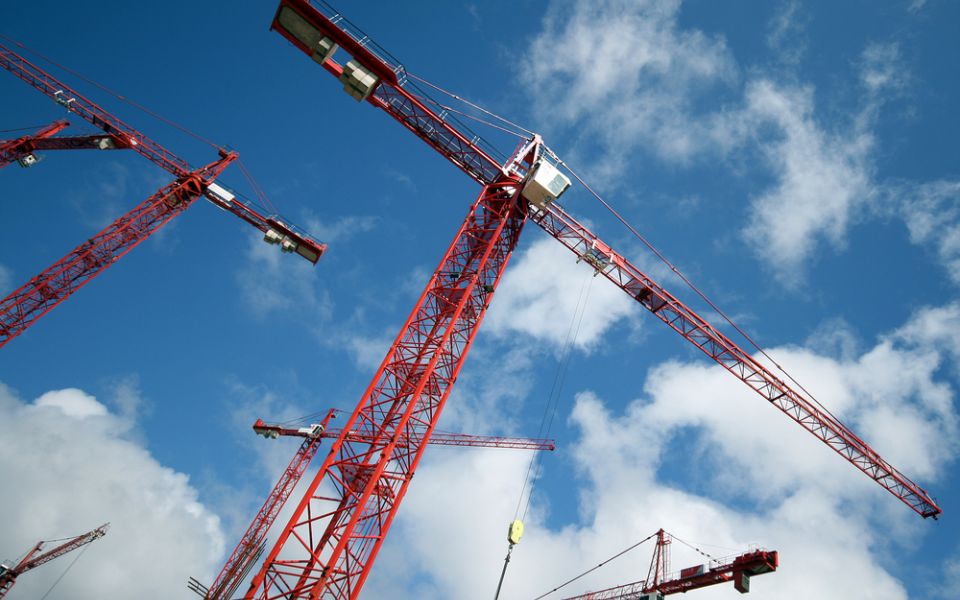
Infrastructure Investment Trusts: are the complex risks worth taking?

Infrastructure assets such as roads, power networks, hospitals and schools are often backed by long-term revenue streams from local or central government. More conservative investors are drawn to them in their search for reliable income streams that rise with inflation.
A motorway river bridge can, for instance, represent a near-monopoly route, and may have scope for raising toll prices while the general growth in road traffic swells revenues. Water, road traffic, broadband and other utility-style infrastructure tends to be fairly stable, while the provision of key buildings such as hospitals, schools and prisons tend to be uncorrelated to the wider economy altogether.
Large, diversified investment trusts such as International Public Partnerships, HICL and 3i Infrastructure invest across a wide range of these assets in the UK and overseas. They can potentially provide investors with an attractive, income-orientated return and welcome diversification from equity and bond markets. They have been seen by many investors as solid and reliable – if a little boring.
Yet over the past couple of years this previously stable sector has been rocked by volatility. One reason has been rising government bond yields. Inevitably, investors compare the income streams from these investments to those of government bonds meaning yields – and prices – tend to rise or fall in sympathy.
Another obstacle was the collapse of Carillion, a contractor to a small number of projects within certain Trusts, which presented operational difficulties. The more significant influence, though, has been a political one stemming from comments made in September 2017 by the Shadow Chancellor, John McDonnell. He warned that the Labour Party would "look to take control" of PFI (Private Finance Initiative) contracts, review them and, if necessary, take them back in-house.
PFI contracts are a common way for these infrastructure Trusts to invest, so the comments prompted share price falls, albeit some fared better than others because exposure to PFI and other UK government-related contracts varies. In addition, each Trust’s exposure has a different make up in terms of the type and structure of contract. For instance, investors have tended to be more concerned about assets in health and education, which are typically higher profile and more emotive.
Chart: Share price performance of infrastructure investment trusts with UK PFI exposure

Source: FE Analytics, capital return only, does not include dividend income. Past performance is not a reliable indicator of future results.
The sell-off was a rational response. In assessing this often-uneventful investment area investors now had to contend with a complex risk. A resurgent Labour party could snatch victory in a General Election – the Labour and Conservative parties are currently roughly even in the voting intention polls – and although the next fixed election date is June 2022 there is a possibility that defeat for the government on Brexit terms could hasten one.
Having assessed this political risk it is also necessary to consider what would happen under a Labour government and how quickly. It could review contracts and find that the cost and terms of taking them back in house outweigh the benefits. Rather than take action on existing contracts they might simply seek to stop any new ones. If they did take action the level of compensation to investors would need to be decided upon, and the process could take some time. In the meantime investors could continue to benefit from a decent level of income.
This complex situation has preventing us from adding an infrastructure investment trust to our Foundation Fundlist of preferred investments, despite our growing belief that share prices in the sector are reflecting an overly-pessimistic view and with yields in the 4 per cent to 6 per cent range good value is on offer.
Indeed, more recent events seem to confirm this. The Board of John Laing Infrastructure Fund(JLIF) has confirmed it is in discussions with a consortium regarding a possible cash offer representing a 16.9 per cent premium to the latest published net asset value (NAV) of 121.9p at 31 March 2018. Assuming a dividend of 3.57p, the total consideration represents a 19.8 per cent premium. While this premium might seem generous, a year ago (before John McDonnell’s speech at the Labour party conference) JLIF shares were trading at a premium of 10 per cent to NAV. The JLIF share price has soared to close to the offer price and the share prices of other Trusts in the sector also responded positively, though not to the same extent.
Other evidence points to institutional appetite for infrastructure assets continuing to grow. The 2018 Preqin Global Infrastructure Report found that infrastructure firm “dry powder” – uninvested cash – was $150bn at June 2017, and this included 69 unlisted infrastructure funds which raised a total of $65bn last year. In our view it is worth reflecting on how valuable these unique portfolios of scarce assets are in diversifying long-term returns and delivering a stream of long-term, predictable and inflation-linked income.
Although likely to be subject to more politically-induced volatility, investment trusts in this sector could be of interest to income-seeking investors wishing to complement a traditional portfolio of equities and bonds.
This article is not personal advice based on your circumstances. No news or research item is a personal recommendation to deal. Investors should be aware that past performance is not a reliable indicator of future results and that the price of shares and other investments, and the income derived from them, may fall as well as rise and the amount realised may be less than the original sum invested. Investment decisions in fund and other collective investments should only be made after reading the Key Investor Information Document or Key Information Document, Supplementary Information Document and Prospectus. If you are unsure of the suitability of your investment please seek professional advice.